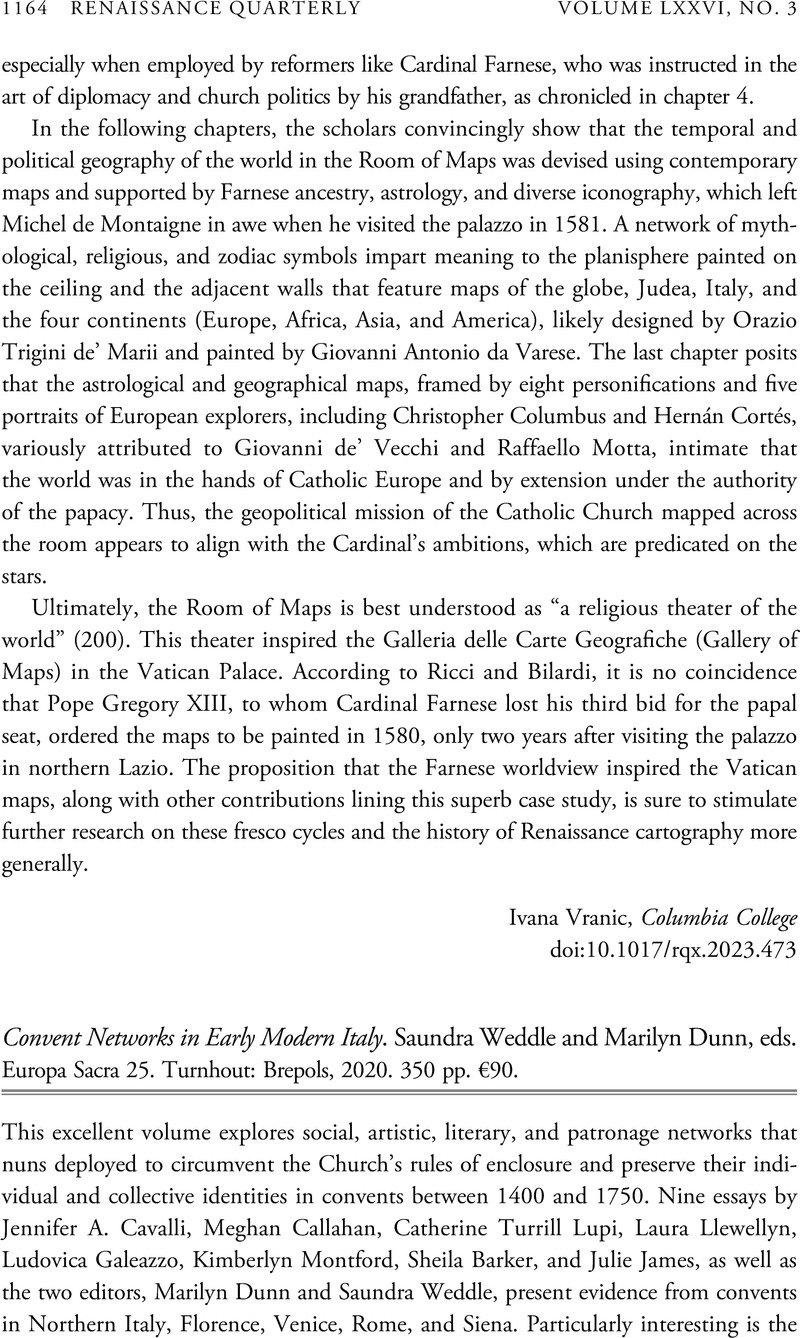No CrossRef data available.
Article contents
Convent Networks in Early Modern Italy. Saundra Weddle and Marilyn Dunn, eds. Europa Sacra 25. Turnhout: Brepols, 2020. 350 pp. €90.
Review products
Convent Networks in Early Modern Italy. Saundra Weddle and Marilyn Dunn, eds. Europa Sacra 25. Turnhout: Brepols, 2020. 350 pp. €90.
Published online by Cambridge University Press: 15 November 2023
Abstract
An abstract is not available for this content so a preview has been provided. Please use the Get access link above for information on how to access this content.

- Type
- Review
- Information
- Copyright
- Copyright © The Author(s), 2023. Published by the Renaissance Society of America



